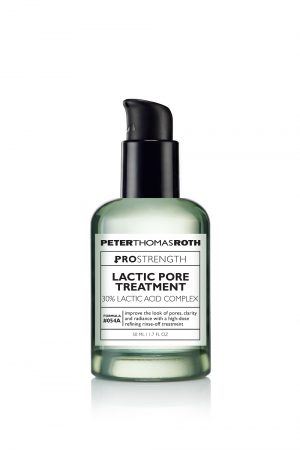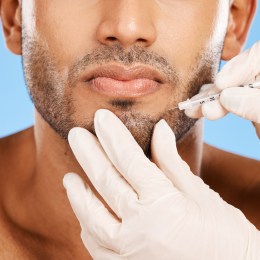There’s a new clinical strength peel coming to Sephora – the first of its kind to retail to consumers in Australia outside of clinics.
Sephora will soon be stocking a 30% lactic acid peel with the upcoming launch of Peter Thomas Roth’s Pro Strength Lactic Pore Treatment. This will be the first of its kind on the Australian market available to consumers outside a clinic environment.

The highly concentrated 30% Lactic Acid Complex aims to purify and reduce the look of enlarged pores, with Witch Hazel to clarify excess oil, and 5% Glycerin to combat any post-treatment dryness. Instructions advise users to apply 2 to 3 pumps evenly to clean skin at night, up to twice a week, and to leave on 2 to 3 minutes, before rinsing thoroughly with water to neutralise the treatment.
The PTR Product Formulation Team tells us that growing savvyness among consumer is the reason behind the new product launch. “Peter Thomas Roth has a rich history of formulating highly concentrated, breakthrough “back bar” treatments for professional use. However, as everyday consumers become increasingly savvy and hands-on, the brand wanted to give skin care enthusiasts expert-level results at home. PRO Strength Lactic Pore Treatment is formulated with an intensive 30% Lactic Acid Complex, giving customers the ability to dramatically reduce the look of pores without an appointment or a prescription.”
They advised us that in addition to safety tests, a consumer perception study was conducted to ensure an optimal experience for at-home users, with a group of 29 women ranging in age from 19 to 65. “When developing our formulas we follow the requirements of each region while still working to deliver clinical results,” says the PTR team.
A traditionally in-clinic prescription-only product with high potency, the product is set to spark some conversations around professional vs consumer homecare, and any potential skin damage that could incur if misused.
“30% Lactic Acid is definitely a high potency for the retail market,” says renowned Melbourne Dermatologist Dr Cara McDonald. “Although lactic acid is one of the safer types of peel for consumers to use. In most cases we would build up to this strength to ensure no adverse events or undesirable side effects.”
Cara says that while the treatment may be effective for some, the onus will be entirely on users to determine their own suitability and safety.
“The safety and efficacy of peels depends greatly on how they are used, so an over-the-counter product puts a lot of responsibility onto the consumer to not only use it correctly but also determine if their skin is suitable and will see benefit from it.”
“In most cases, a professional dermal therapist or dermatologist will ensure correct patient selection and modify or combine ingredients and the application to perfectly suit the individual needs. In-clinic treatments not only improves safety, but can greatly enhance the patient’s likelihood of successful outcomes due to the practitioner’s expertise in optimising treatment benefits & clinical endpoints. Unfortunately a peel of this strength on the wrong person, can result in a LONG, difficult and stressful job trying to restore skin to health,” Cara continues.
“An over-the-counter product may be perfect for maintenance in those who are used to peels, or for those who can’t afford the time or money for regular professional treatments. I suspect though that these people will also miss out on some of the benefits associated with regular professional review such as tailoring treatments to the changing needs of the skin (which might happen with age, stress, weather or illness), and adjuvant skin care product advice or procedures like LED therapy.”
What are your thoughts on at-home peels? Fine for your clients’ maintenance at home? Or should they stay in-clinic? Share your thoughts in the comments below.





